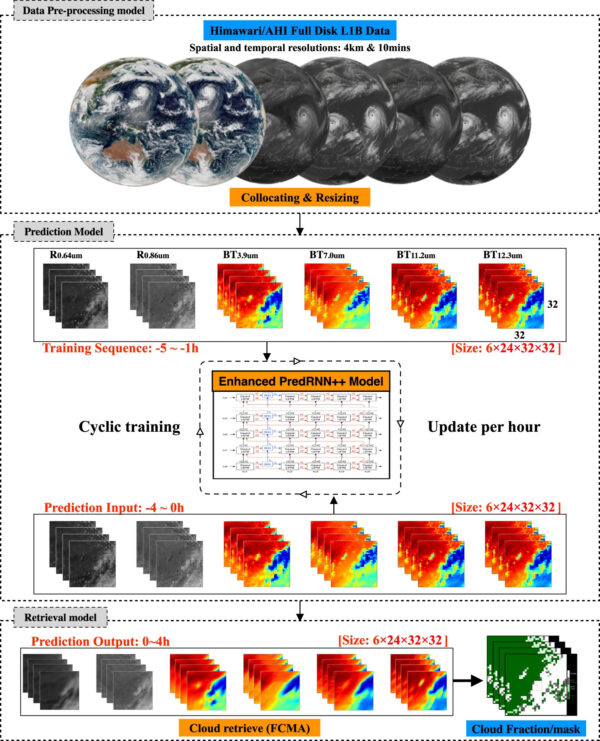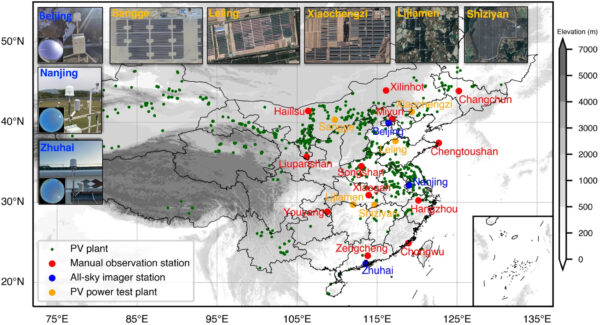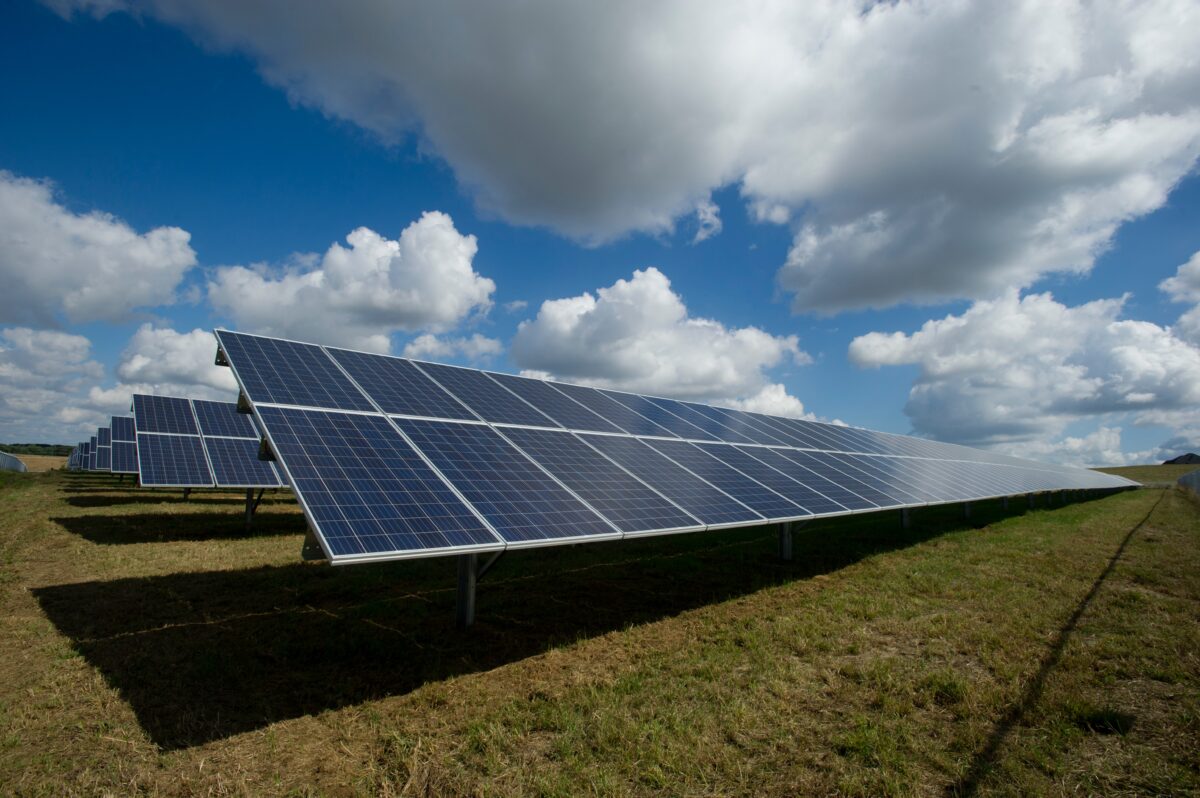Researchers from China have developed a novel way to nowcast the cloud coverage of PV plants. It consists of a new algorithm that uses machine learning techniques for processing and taking geostationary satellite images as input.
“We are committed to developing a daytime hourly intra-day cloud fraction (CF) prediction algorithm for small areas over PV plants,” they explained. “Our primary objective is to develop an innovative and easy-to-promote algorithm or system based on the key framework of the PredRNN++ model.”
The “NCP_CF” method receives input radiance data from the Himawari-8/9 satellite. It can reportedly process data centered at PV plants with spatio-temporal resolutions of 4 km. It then transforms these details into tiles, which are used for a prediction model.
The model is also said to be able to learn to predict long-term future imageries in various spatio-temporal tasks using recurrent-neural networks-based (RNNs) long short-term memory (LSTM) algorithm framework. Modified for cloud forecasting, the novel system updates every hour, showing the most recent cloud images for the following four hours. Then, a cloud mask algorithm calculates the number of cloudy pixels over the PV plants.

Image: Sun Yat-sen University and Southern Marine Science and Engineering Guangdong Laboratory, Nature Communications, CC BY 4.0 DEED
The novel prediction system was tested on five PV plants located in China from 2019 to 2022. The results were then compared to observations from twelve ground-based manual stations and three all-sky imager stations.
Popular content
As for the predicted cloud fraction (CF) data, the scientists found their system to have root mean square errors (RMSEs) of 0.21, 0.25, 0.3, and 0.35 for the forecast leading time of one hour, two hours, three hours, and four hours, respectively. The mean bias errors (MBEs) or the same leading times were found at −0.09, −0.08,−0.07, and −0.03 for the forecast.

Image: Sun Yat-sen University and Southern Marine Science and Engineering Guangdong Laboratory, Nature Communications, CC BY 4.0 DEED
“Our future mission is to further promote applications and improve the accuracy of this cloud cover nowcasting technique, especially for the forecast leading time of more than two hours, by using higher spatial-resolution satellite data and combining the short-term forecast data from a rapidly updated regional high resolution numerical weather prediction,” the academics concluded.
The research was conducted by scientists from Sun Yat-sen University, Southern Marine Science and Engineering Guangdong Laboratory, China Meteorological Administration, China General Nuclear Power Group, and the Beijing Keytec Technology. They presented their results in “Accurate nowcasting of cloud cover at solar photovoltaic plants using geostationary satellite images,” which was recently published in Nature Communications.
This content is protected by copyright and may not be reused. If you want to cooperate with us and would like to reuse some of our content, please contact: editors@pv-magazine.com.


By submitting this form you agree to pv magazine using your data for the purposes of publishing your comment.
Your personal data will only be disclosed or otherwise transmitted to third parties for the purposes of spam filtering or if this is necessary for technical maintenance of the website. Any other transfer to third parties will not take place unless this is justified on the basis of applicable data protection regulations or if pv magazine is legally obliged to do so.
You may revoke this consent at any time with effect for the future, in which case your personal data will be deleted immediately. Otherwise, your data will be deleted if pv magazine has processed your request or the purpose of data storage is fulfilled.
Further information on data privacy can be found in our Data Protection Policy.